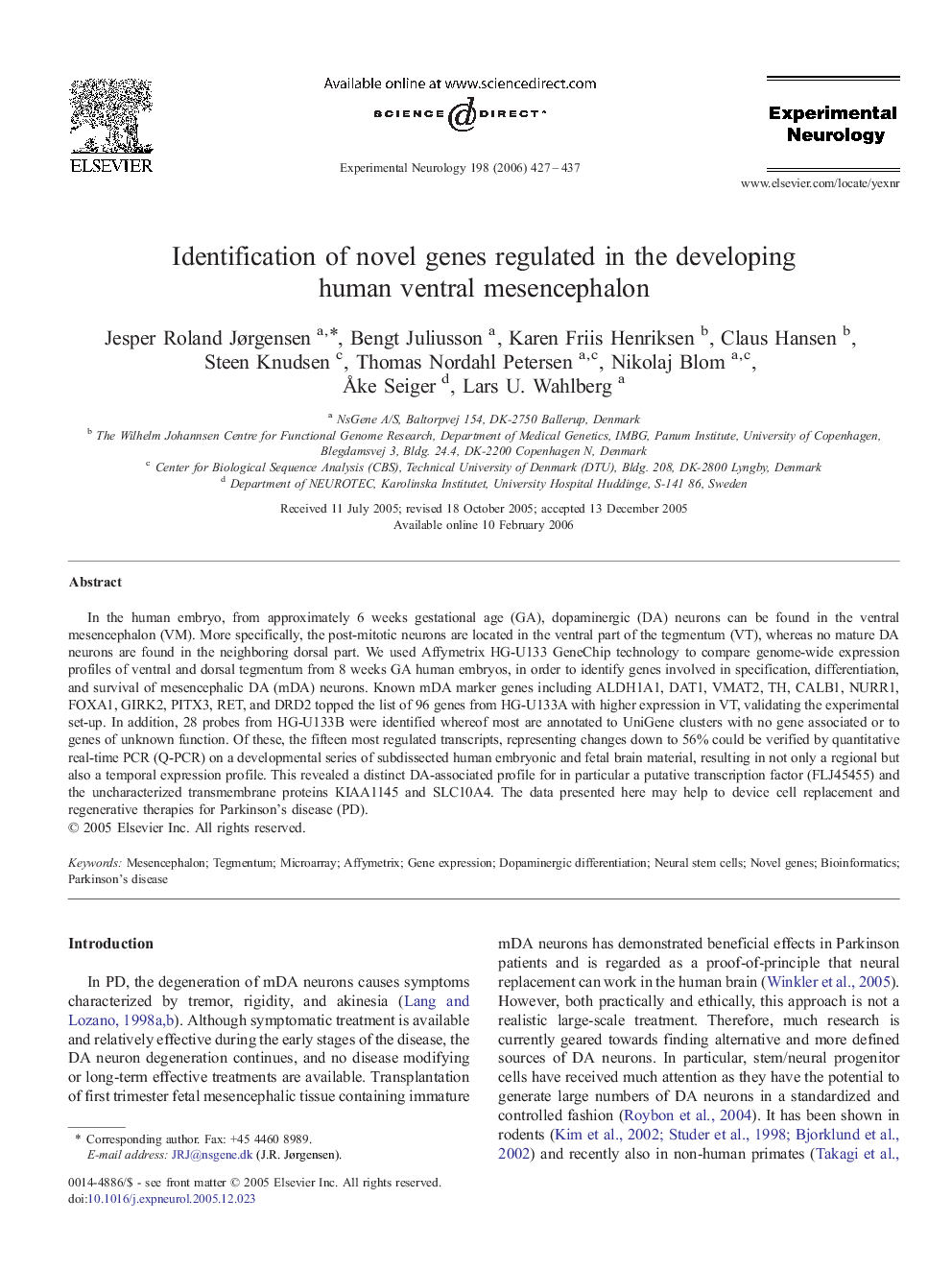| Article ID | Journal | Published Year | Pages | File Type |
|---|---|---|---|---|
| 3057466 | Experimental Neurology | 2006 | 11 Pages |
In the human embryo, from approximately 6 weeks gestational age (GA), dopaminergic (DA) neurons can be found in the ventral mesencephalon (VM). More specifically, the post-mitotic neurons are located in the ventral part of the tegmentum (VT), whereas no mature DA neurons are found in the neighboring dorsal part. We used Affymetrix HG-U133 GeneChip technology to compare genome-wide expression profiles of ventral and dorsal tegmentum from 8 weeks GA human embryos, in order to identify genes involved in specification, differentiation, and survival of mesencephalic DA (mDA) neurons. Known mDA marker genes including ALDH1A1, DAT1, VMAT2, TH, CALB1, NURR1, FOXA1, GIRK2, PITX3, RET, and DRD2 topped the list of 96 genes from HG-U133A with higher expression in VT, validating the experimental set-up. In addition, 28 probes from HG-U133B were identified whereof most are annotated to UniGene clusters with no gene associated or to genes of unknown function. Of these, the fifteen most regulated transcripts, representing changes down to 56% could be verified by quantitative real-time PCR (Q-PCR) on a developmental series of subdissected human embryonic and fetal brain material, resulting in not only a regional but also a temporal expression profile. This revealed a distinct DA-associated profile for in particular a putative transcription factor (FLJ45455) and the uncharacterized transmembrane proteins KIAA1145 and SLC10A4. The data presented here may help to device cell replacement and regenerative therapies for Parkinson's disease (PD).
